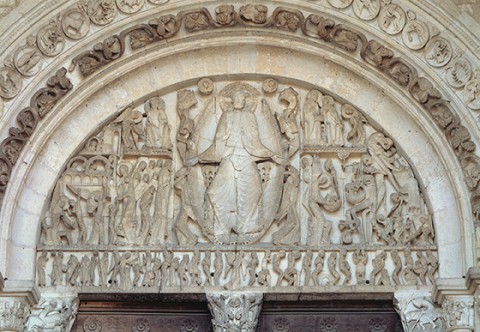Last Judgment, by Gislebertus (ca. 1130)

The medieval Cathedral of St. Lazare in Autun, France, constructed in about 1120, contained relics of St. Lazarus. Pilgrims to the church were greeted at the entrance by a sculpture of the last judgment. The sculpture is signed “Gislebertus hoc fecit” (Gislebertus made this), confirming the sculptor’s identity in a way that is uncommon in the medieval era. Christ is in the center of the composition in a mandorla, or almond-shaped frame. Below Christ, the dead are rising, and they line up to have their souls weighed. An angel with a trumpet summons all creatures to judgment. Angels and demons fight at the scales where souls are being weighed, as each tries to manipulate the scale for or against a soul. In 1766, the apocalyptic imagery was considered offensive, and the tympanum was covered with plaster. The head of Christ, which projected outward, was broken off to facilitate a flat surface. The head was rediscovered and restored to its position in the recovered work in 1948.





